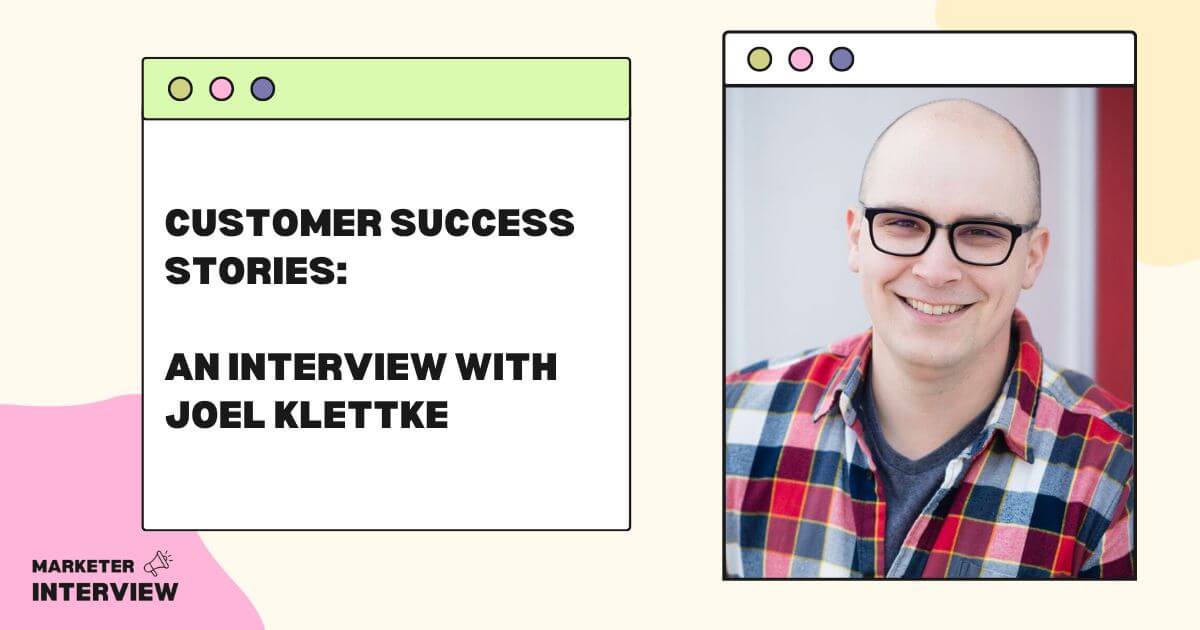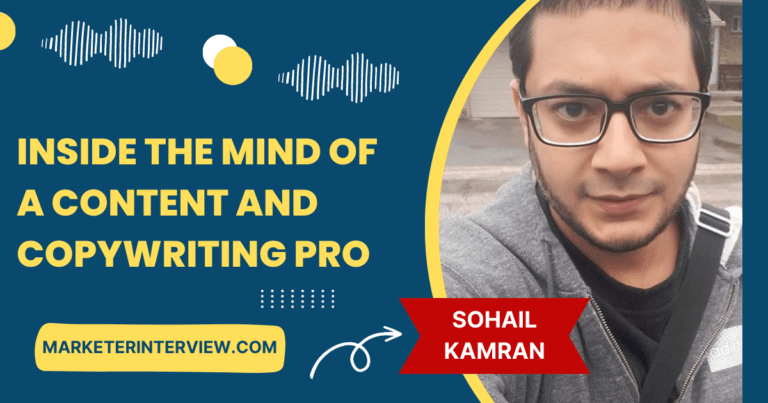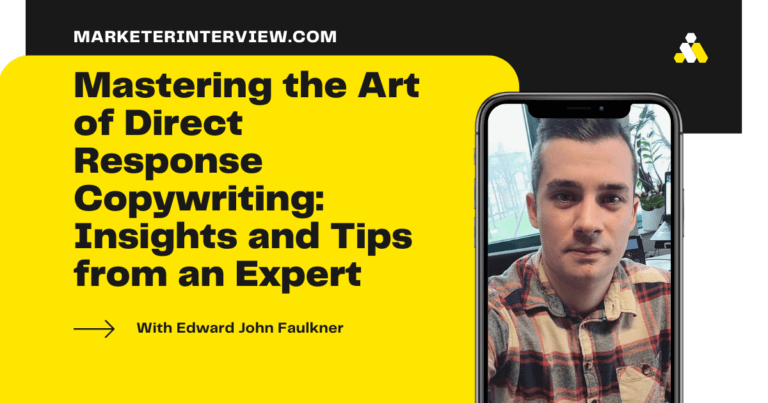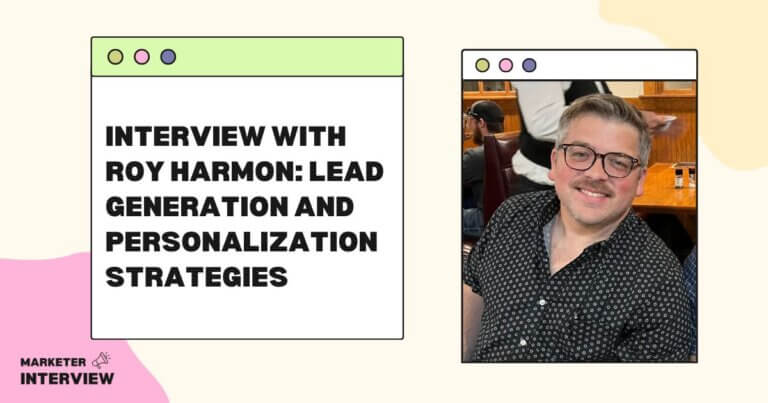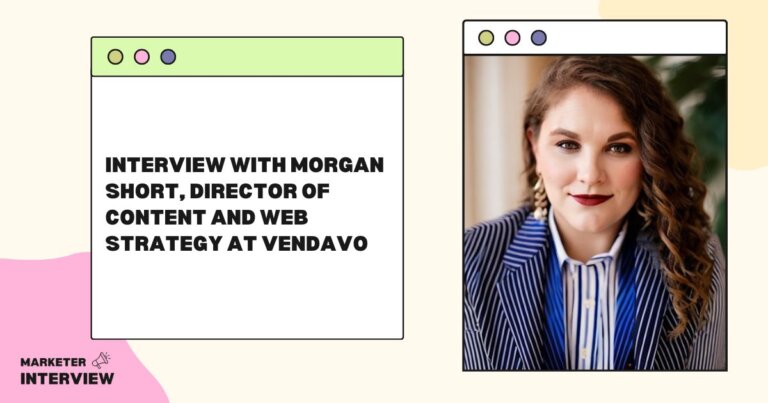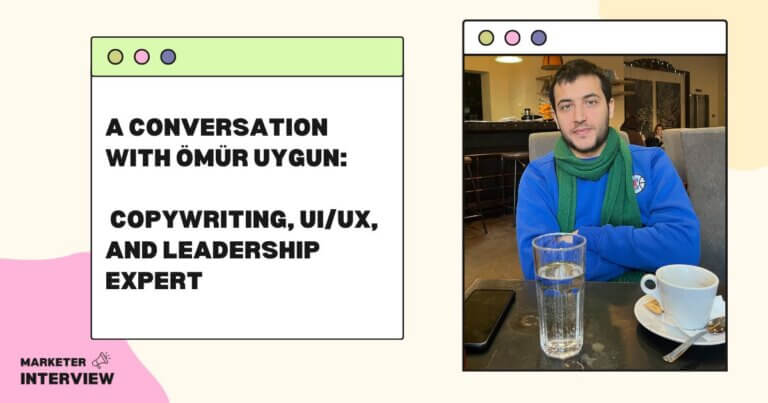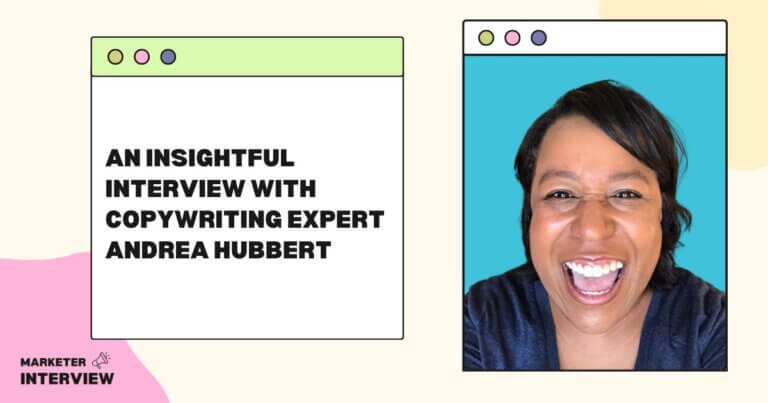Customer Success Stories: An Interview with Joel Klettke
Welcome to Marketer Interview, the popular marketing blog where we dive deep into the experiences and expertise of remarkable marketers.
In today’s interview, we enjoyed speaking with Joel Klettke, the Founder of Case Study Buddy. With an impressive client roster of renowned companies like HubSpot, Loom, Docebo, Extensiv, and Lever, Joel and his team excel in scaling case study production while maintaining top-notch quality.
They specialize in transforming customer success stories into comprehensive campaigns that drive results throughout the buyer’s journey.
We are thrilled to learn from Joel’s insights on customer success stories and copywriting, making this interview a valuable resource for marketers looking to enhance their strategies.
Contents
- 1 Could you tell us about your journey into the field of marketing and how you became interested in customer success stories and copywriting?
- 2 What inspired you to establish Case Study Buddy, and what unique value do you provide to your clients?
- 3 How do you approach transforming customer success stories into comprehensive campaigns?
- 4 In your experience, what role do case studies play in shortening sales cycles and generating better-qualified leads?
- 5 Can you share a particularly challenging customer success story project you worked on? How did you overcome the obstacles and achieve success?
- 6 What are some essential elements that make a compelling and persuasive case study?
- 7 How do you ensure each customer success story aligns with your client’s revenue and business goals?
- 8 What strategies do you employ to gain buy-in from stakeholders and navigate the client approval process effectively?
- 9 Please share insights on the tools and software you and your team utilize to streamline your case study production and content campaigns.
- 10 What advice do you have for professionals looking to enhance their copywriting skills and create impactful customer success stories?
Could you tell us about your journey into the field of marketing and how you became interested in customer success stories and copywriting?
My first job in marketing was SEO at a small agency. This was the first place I was exposed to the power of social proof, agency processes, and B2B selling.
I’d always loved writing but never saw a career path in it — until working for the agency, when I saw how much needed to be created for clients, from websites to blog posts and beyond.
I went out on my own in 2013. I started Business Casual Copywriting, where I first did content work like blog posts and ebooks before transitioning to conversion copywriting and working for clients like HubSpot and Scott’s Cheap Flights.
After completing a project for WP Engine, someone on their board asked if I could do case studies – a small company they advised needed one. I decided to give it a shot and, through that project, realized the enormous potential of customer success stories as an asset and a business with a team behind it.
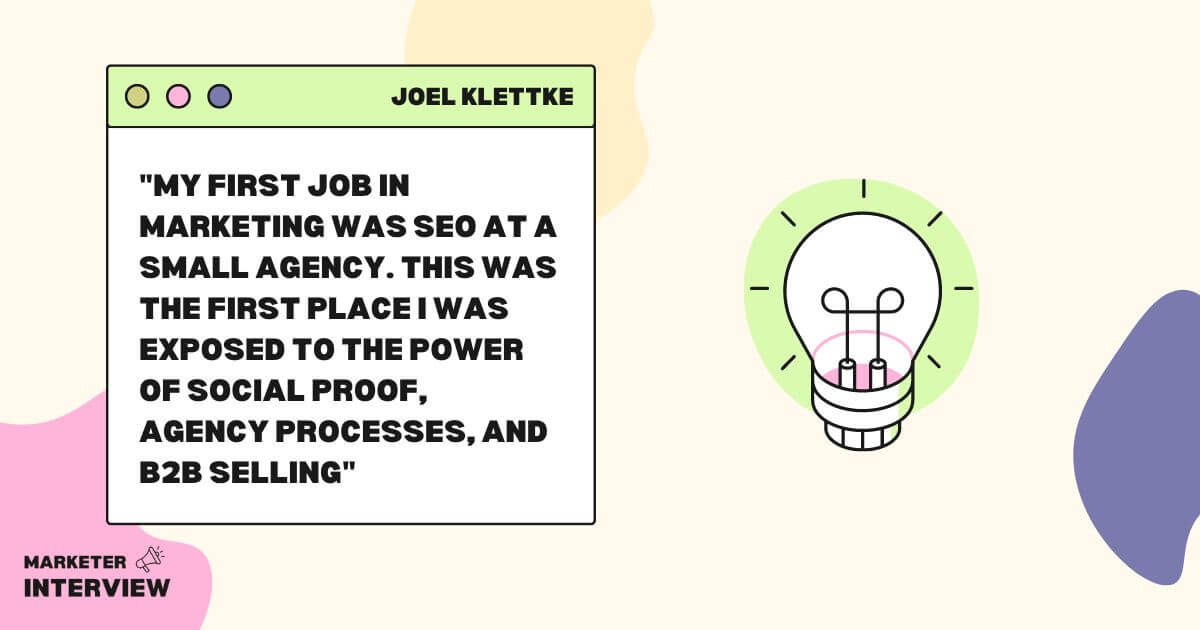
What inspired you to establish Case Study Buddy, and what unique value do you provide to your clients?
In doing that project for Pingboard (the small company I alluded to earlier), I quickly realized a few things:
- Case studies are challenging, with many moving pieces and disciplines involved. From coordination and planning to interviewing, writing, filming, editing, project management, and design, a lot of work goes into getting them done well.
- Most case studies are terrible. There’s nothing but an upside to making your customer stories stronger and more compelling, and the bar was low. I felt I could make a difference.
- There’s a HUGE and constant demand for customer success stories. Every B2B business benefits from having them, and every growing company wants and needs them, even if they don’t have the team or processes to do them well.
- There are repeatable steps, processes, and disciplines I felt I could build a team around and master.
And that’s the significant value we bring to clients: an incredible team, a refined process, and the experience of doing thousands of stories. We know how to make case studies strategic, compelling and, most of all – how to make sure they don’t die in the production process.
How do you approach transforming customer success stories into comprehensive campaigns?
When we think about customer stories as campaigns, we begin with the end in mind:
- What business or revenue goals should this story support?
- Who are we trying to appeal to?
- What pains or desired outcomes do they contend with?
- Where will we reach them, and at what stage of the buyer’s journey?
Considering those elements, we focus on telling the most profound story first: Usually a long-form video or written piece.
Once that’s established, we follow the “nibble, bite, snack, meal, buffet” approach, where we consider the appetite for information of the audience on the channels we plan to reach them on.
That can mean creating one-sheets for sales and cold outreach, social collateral to promote the post, slide decks for presentations, and nuclear decks full of multiple stories with complementary proof …
There’s quite a bit you can turn a case study into. We created a resource with 100+ ideas here!
In your experience, what role do case studies play in shortening sales cycles and generating better-qualified leads?
Case studies can play a massive role in accelerating the sales cycle by proving to buyers (or buying boards) that their concerns about a product or potential option will not rear their ugly heads but have already been dealt with and solved.
They are tangible proof that a company just like theirs made the decision they’re debating and got the results they’re after. They’re also fantastic resources for showcasing an offer’s thinking, strategy, or specific valuable features/components.
Basically, they’re real-world proof you can do what you promise, with a customer going to bat for you and vouching for the fact that you can deliver.
There have been many challenging stories and situations, from the story we had to chase for over two years to see final approval (success!) to more custom stories where we’ve accommodated multiple viewpoints, from multiple departments, in multiple interviews.
One particular challenge that was fun to take on was the goal of capturing 20+ video testimonials at a live event our client was hosting.
Together, we road-mapped the event, prioritizing which clients to ask, ensuring legal release was in place before the event, planning out custom question sets, and getting the potential content vetted by the appropriate parties.
We had a rolling shared spreadsheet we collaborated on, and now that the production phase is kicked up, our client portal (where they can access every project in progress for real-time updates) is coming in clutch.
It took a lot of foresight and planning – and was a massive success.
What are some essential elements that make a compelling and persuasive case study?
One critical element is an intentional strategy. You want to be considerate of who you are selecting to showcase and why.
Beyond that, a compelling customer story hinges on the audience’s ability to believe and relate. To that end, some of the elements to consider:
- In your challenge section, go beyond what was wrong and why it was essential to solve. Set the stakes, and introduce a human hero: business decisions are still human decisions.
- In your solutions section, dive into what was done and why those things were done or how, precisely, different features/aspects of your offering were valuable. This is a chance to showcase your thinking or how you solve problems for ideal clients.
- In the results section, explore the KPIs/metrics and the impact of the change. What transformation took place? For their boss?
In addition, try to bring in credibility elements like headshots, logos, detailed quotes, and imagery (photos, etc.) where possible.
How do you ensure each customer success story aligns with your client’s revenue and business goals?
First, we bring that perspective into candidate identification and selection.
Define and outline those goals, and translate them into coverage gaps: areas you are currently light on social proof/customer stories. Centralize that in an SOP where everyone responsible for identifying case study candidates (and asking them to participate) can see and act on it.
During the intake process for a story, we’ll encourage clients to capture details of that story on a fundamental level so we know what we are walking into.
Next, when a candidate confirms, we craft a question set based on the context of their story and how it aligns with a goal established. You only get the gold by asking the right questions and pressing into suitable topics.
Finally, our production team on the writing/video end knows the narrative we aim for and keeps the story they tell aligned with those goals, as long as they are true to reality.
So much approval comes down to setting the right expectations. A “No” typically comes from the unknown: fear of what will be disclosed, the uncertainty of the time requirements, and lack of clarity on the final asset(s) created or how they will be presented.
We try to have the ask come from someone both familiar and authoritative, and we make sure all of the most common questions are (quickly) answered before they can be asked.
By being able to promise a focused process, beautiful final assets, and total control of the narrative to the client’s customer, approvals are easier to secure.
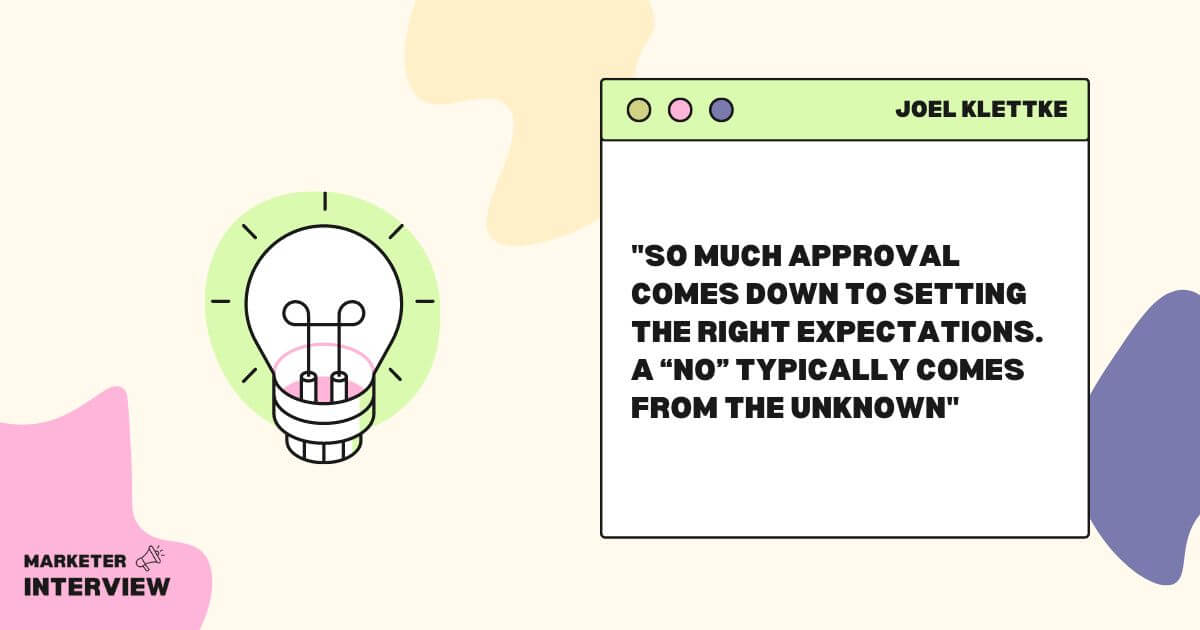
It’s less about the tools and more about how we communicate, plan, and anticipate.
Our stack is nothing special: Close, Clickup, Google Worksuite, Frame, Descript, Dock, etc.
Even the best tools are worthless without a focused intention, though, which makes us able to deliver the way we do.
What advice do you have for professionals looking to enhance their copywriting skills and create impactful customer success stories?
Begin with the end in mind. Case studies that win are a byproduct of a well-thought-out process that carefully considers the company’s goals and customer experience.
Zoom out: think big-picture, then build your process to support those ideas.
And more than anything, optimize for speed. The faster you can move to deliver a focused, detailed, and personal story, the better your win and publish rates will be.
